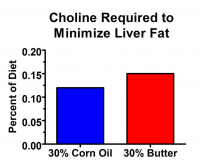managing
Member
- Joined
- Jun 19, 2014
- Messages
- 2,262
So, what advice, thoughts, suggestions would you have for somebody who recently discovered they have mutations of MTHFR (both common mutations) genes AND SLC19A2 (which leads to Thiamine responsive Megaloblastic Anemia). 45 yr old male. Been PUFA depleting for years. Active: cycling, skiing, weight lifting, but also suffer from various CFS type effects cyclically.
The TRMA manifests itself most strongly in progressive sensorineural hearing loss. Less so as diabetes. Defintely some insulin resistance issues and 10% overweight. But blood glucose well under control.
The MTHFR mutations manifest mainly as IBS, Migraine, gut permeability, autoimmune/inflammatory.
Supplements/Therapies
Thiamine, obviously. How much and how often? As a water soluble, it should be 2-3 x day to keep levels up? Can it be overdone? Doesn't seem to have any toxicity per se.
Methylcobalamin and Folate supplementation are controversial and RP seems to be cautionary about over methylation
Niacinamide--even small doses put me straight to sleep. Yes, with sugar. Am I missing something?
Pansterone--no, I don't expect it to be therapeutic here, but any concerns?
Weight Loss
Seems I could benefit from weight loss. Supplements dietary strategy suggested as adaptation to these mutations? Low fat has never dropped one ounce from me. Low carb was very effective, but I am hesitant to make insulin resistance worse on purpose. Have recovered a lot of insulin sensitivity since low carb days. Paging @tyw on many levels . . .
Children
Children haven't been tested yet. Wife's mother has Parkinson's which some associate with MTHFR mutations, so a chance they got it from both sides. Any reason NOT to supplement them at least with Thiamine?
The TRMA manifests itself most strongly in progressive sensorineural hearing loss. Less so as diabetes. Defintely some insulin resistance issues and 10% overweight. But blood glucose well under control.
The MTHFR mutations manifest mainly as IBS, Migraine, gut permeability, autoimmune/inflammatory.
Supplements/Therapies
Thiamine, obviously. How much and how often? As a water soluble, it should be 2-3 x day to keep levels up? Can it be overdone? Doesn't seem to have any toxicity per se.
Methylcobalamin and Folate supplementation are controversial and RP seems to be cautionary about over methylation
Niacinamide--even small doses put me straight to sleep. Yes, with sugar. Am I missing something?
Pansterone--no, I don't expect it to be therapeutic here, but any concerns?
Weight Loss
Seems I could benefit from weight loss. Supplements dietary strategy suggested as adaptation to these mutations? Low fat has never dropped one ounce from me. Low carb was very effective, but I am hesitant to make insulin resistance worse on purpose. Have recovered a lot of insulin sensitivity since low carb days. Paging @tyw on many levels . . .
Children
Children haven't been tested yet. Wife's mother has Parkinson's which some associate with MTHFR mutations, so a chance they got it from both sides. Any reason NOT to supplement them at least with Thiamine?
Last edited:

